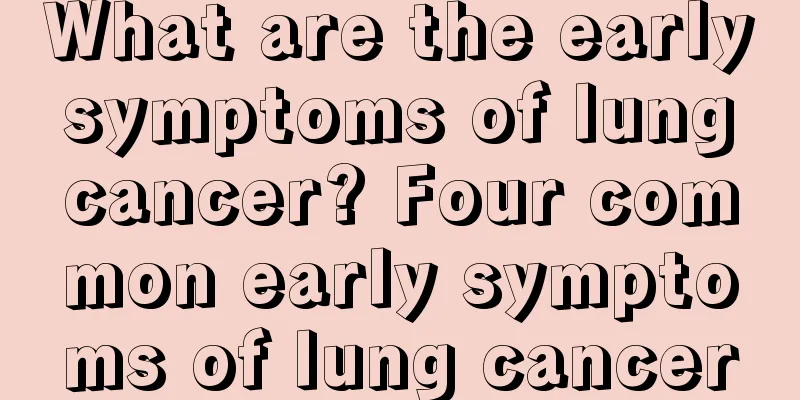Sequelae of two-thirds gastrectomy

|
Nowadays, people are very busy every day and face a lot of pressure. Being in such a state for a long time will have a lot of impact on physical health. Gastric disease is a common disease in today's life. After suffering from gastric disease, people will only think of treatment when the disease flares up, which makes the disease more and more serious. Gastrectomy is the last method of treating gastric disease. Sequelae of two-thirds gastrectomy 1. Gastric bleeding: After subtotal gastrectomy, a small amount of dark red or brown bloody contents can be drained from the gastric tube generally within 24 hours. This is mostly due to residual blood in the stomach during the operation or a small amount of exudation from the gastrointestinal anastomosis wound surface. It is a normal phenomenon after surgery. If a large amount of blood is drained from the gastric tube in a short period of time, especially fresh blood, or even vomiting blood, black stools, and hemorrhagic shock in severe cases, it is bleeding caused by a few reasons such as small blood vessels at the incision or anastomosis that have not been ligated or the suture is not tight enough; the gastric mucosa is clamped by forceps or the bleeding of the left duodenal ulcer is not completely stopped. Bleeding may also be secondary, that is, it occurs several days after the operation, mostly due to ligation or suture that is too tight, resulting in tissue necrosis and ligation suture falling off. More severe early bleeding, or even shock, requires decisive re-exploration to stop the bleeding. Secondary bleeding is usually not very serious and most of the bleeding can stop on its own with conservative treatment. 2. Rupture of duodenal stump: This is the most serious complication of Billroth II type subtotal gastrectomy, with a high mortality rate of about 10-15%. This complication usually occurs 4-7 days after surgery. It manifests as sudden severe pain in the right upper abdomen, obvious tenderness, rebound pain, abdominal muscle tension and other peritonitis symptoms in the local or entire abdomen. The prevention method is to properly suture the duodenal stump. Once the stump ruptures, surgical repair is difficult to succeed and drainage should be performed immediately. Protect the skin around the wound from corrosion by digestive juices. Maintain water, electrolyte balance and adequate nutrition through intravenous nutrition or jejunostomy high-nutrition liquid food. In addition, antibiotics should be used to prevent and treat abdominal infections. If it is caused by obstruction of the afferent jejunal loop, side-to-side anastomosis of the afferent jejunum and the efferent jejunum can be performed to relieve the obstruction. Most of the cases can heal themselves after being treated with the above techniques. 3. Gastrointestinal anastomosis rupture or fistula: It usually occurs 5-7 days after surgery. If it occurs within 1-2 days after surgery, it means that the suture was not done well during the operation. Generally speaking, it is mostly caused by improper suturing, excessive tension at the anastomosis, local tissue edema or hypoproteinemia, which leads to poor tissue healing. Rupture of the gastrointestinal anastomosis often causes severe peritonitis. If peritonitis is caused by anastomotic rupture, immediate surgical repair is required and is usually successful. However, after the operation, reliable gastrointestinal decompression must be maintained, and supportive therapies such as blood transfusion and infusion must be strengthened. If the anastomotic rupture occurs late and local abscess or fistula has formed, in addition to drainage, gastrointestinal decompression and supportive therapy are also required. Generally, the anastomotic fistula can heal on its own within a few weeks. If the condition does not heal for a long time, another gastrectomy should be considered. 4. Obstruction after subtotal gastrectomy Subtotal gastrectomy with Billroth I anastomosis has a low chance of obstruction, and anastomotic obstruction only occurs occasionally. |
<<: What soap should I use to wash my face and remove acne
>>: Tips on how to get rid of acne and acne marks
Recommend
What are the consequences of holding in a fart
Farting in public is a very embarrassing thing be...
What preparations need to be made before pancreatic cancer surgery
Most pancreatic cancers require surgical treatmen...
Early symptoms of skin cancer
Skin cancer is a malignant tumor of the skin. In ...
What are the reasons for rapid hair growth?
Hair is the most important hair tissue for people...
Is ginseng good for lung cancer?
There are certain benefits for lung cancer patien...
The skin on the elbow is rough and black
When we take a shower, we usually rub our whole b...
Early signs of domestic violence tendency
Many people have obvious tendencies towards domes...
What is the best treatment for hyperthyroidism? Hyperthyroidism can be treated like this
Hyperthyroidism is also known as hyperthyroidism....
How much does liver cancer surgery cost
How much does liver cancer surgery cost? Liver ca...
What is the self-treatment method for allergic rhinitis?
As we all know, allergic rhinitis is extremely ha...
What is the correct way to massage the Jianjing acupoint?
As we all know, there are many acupoints distribu...
Can eating bitter melon raw help get rid of acne?
Bitter melon can remove acne, mainly because it h...
What are the acupuncture points for treating urethritis?
Urinating is a very important thing for the human...
How to remove the wax from hair
Many friends have their hair waxed, but then they...
Why does the skin on the face turn yellow
A yellow complexion is a problem that many people...









